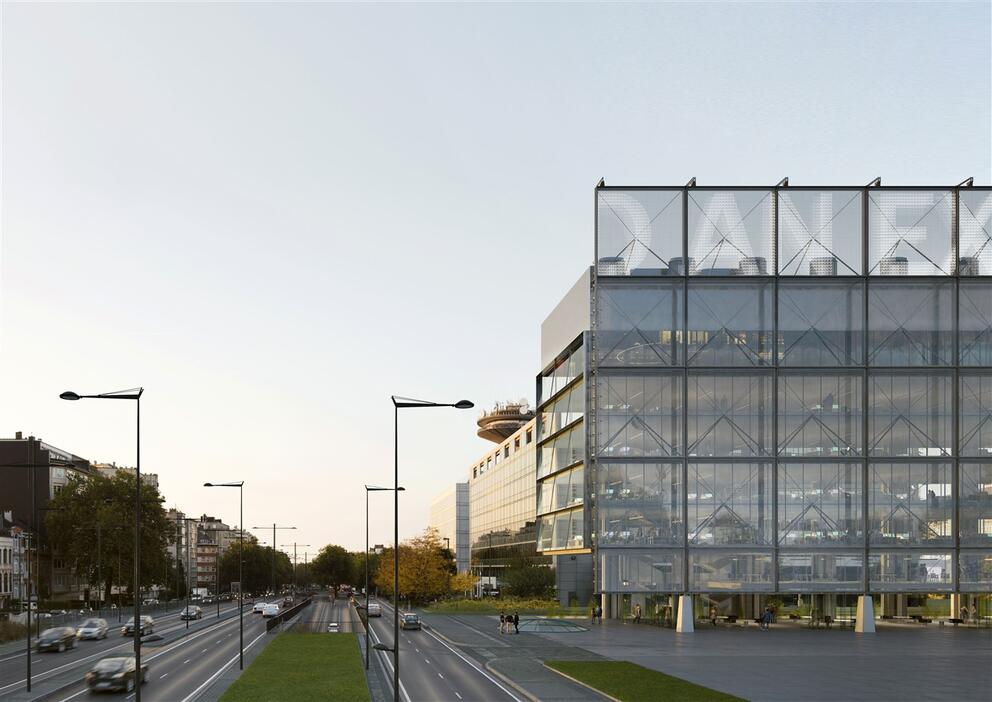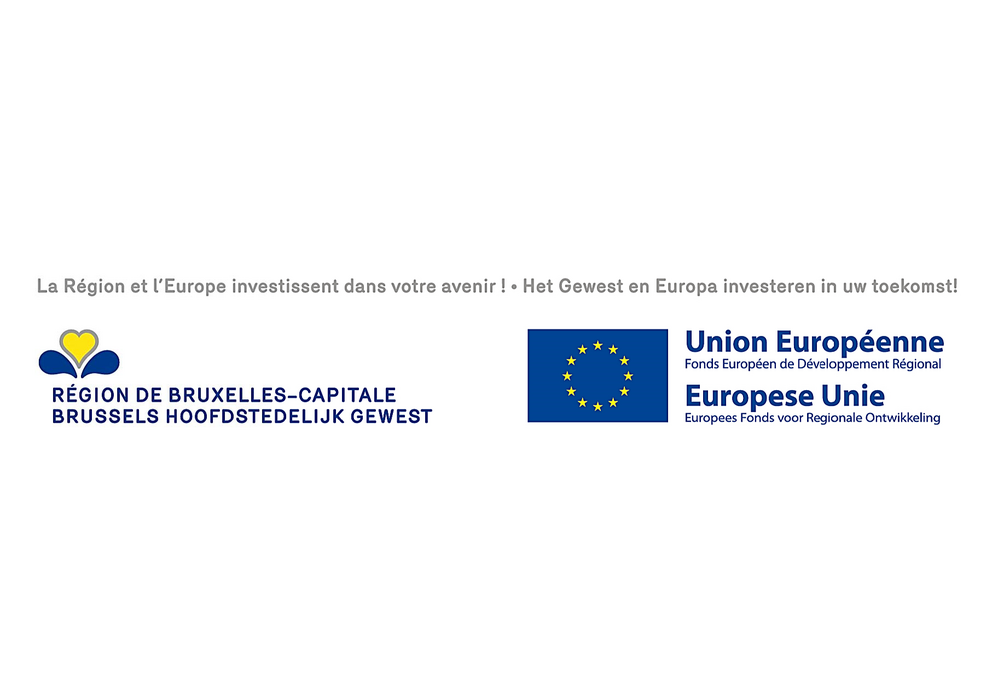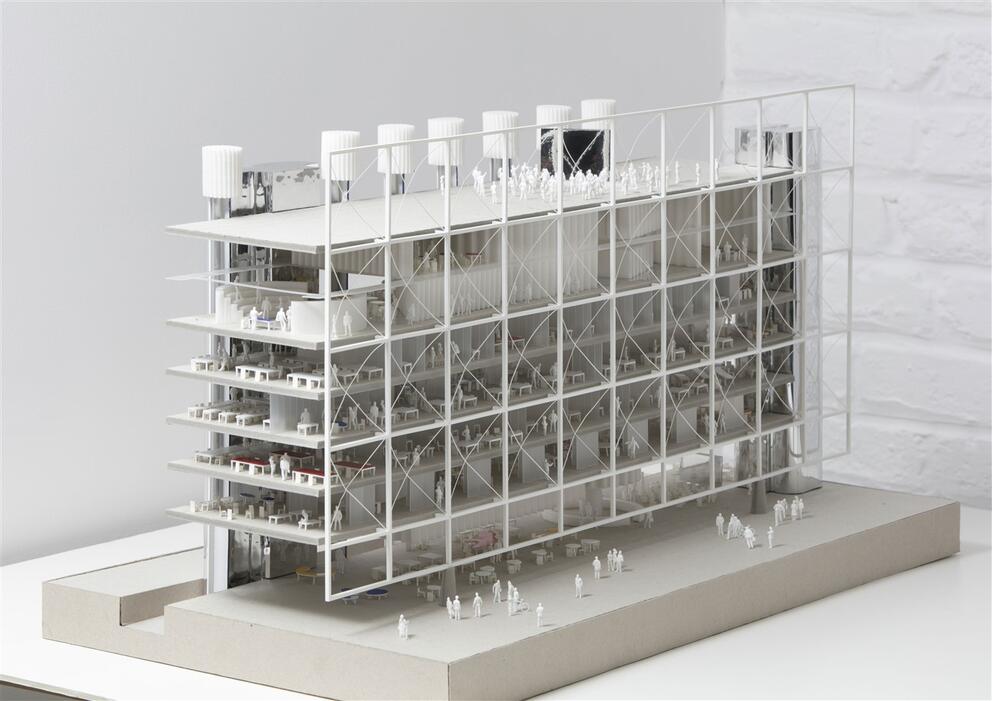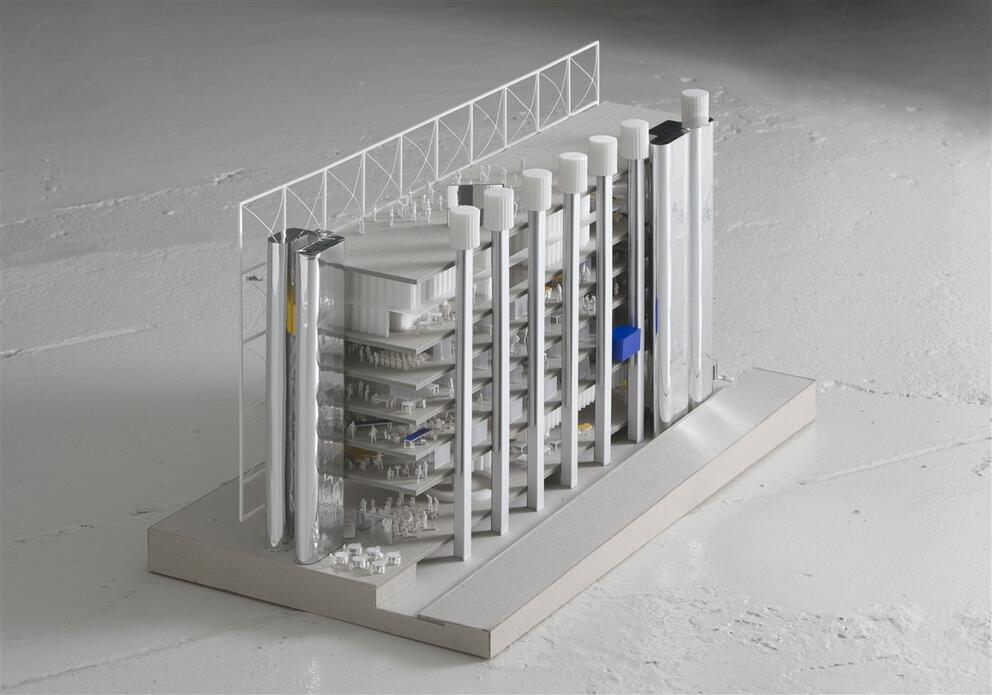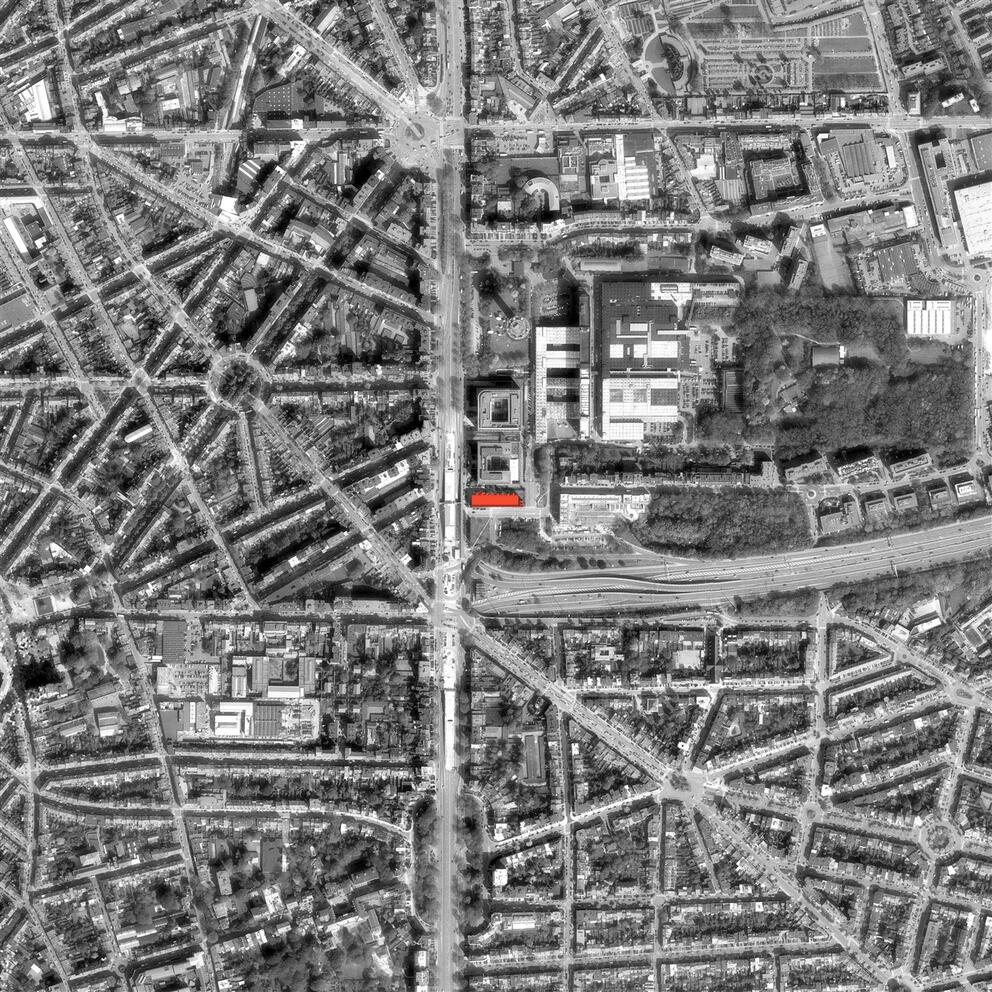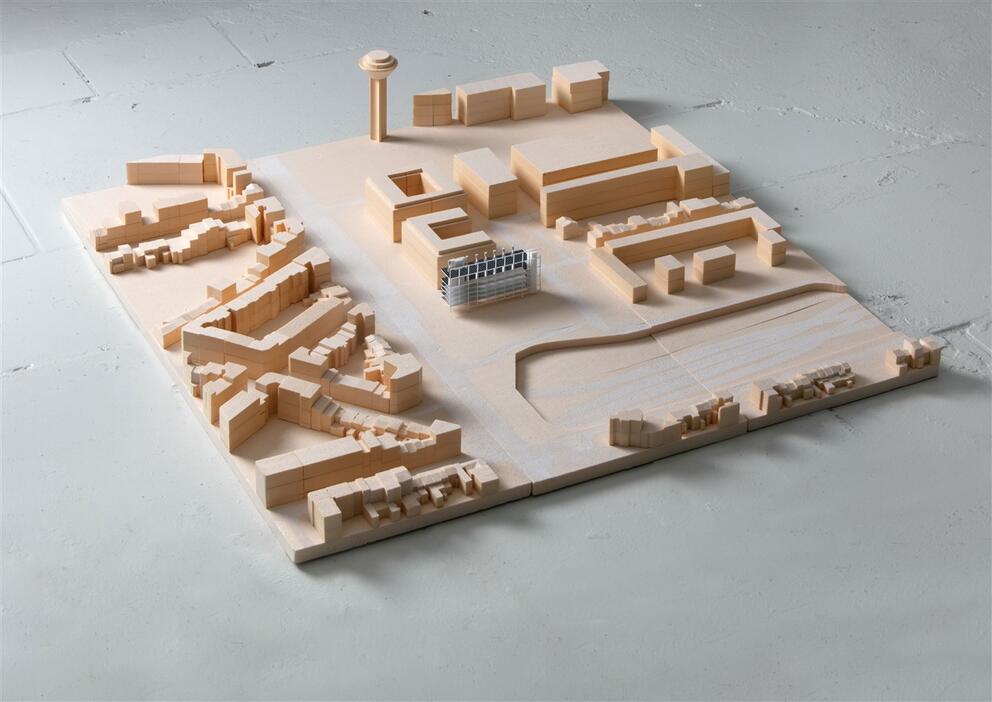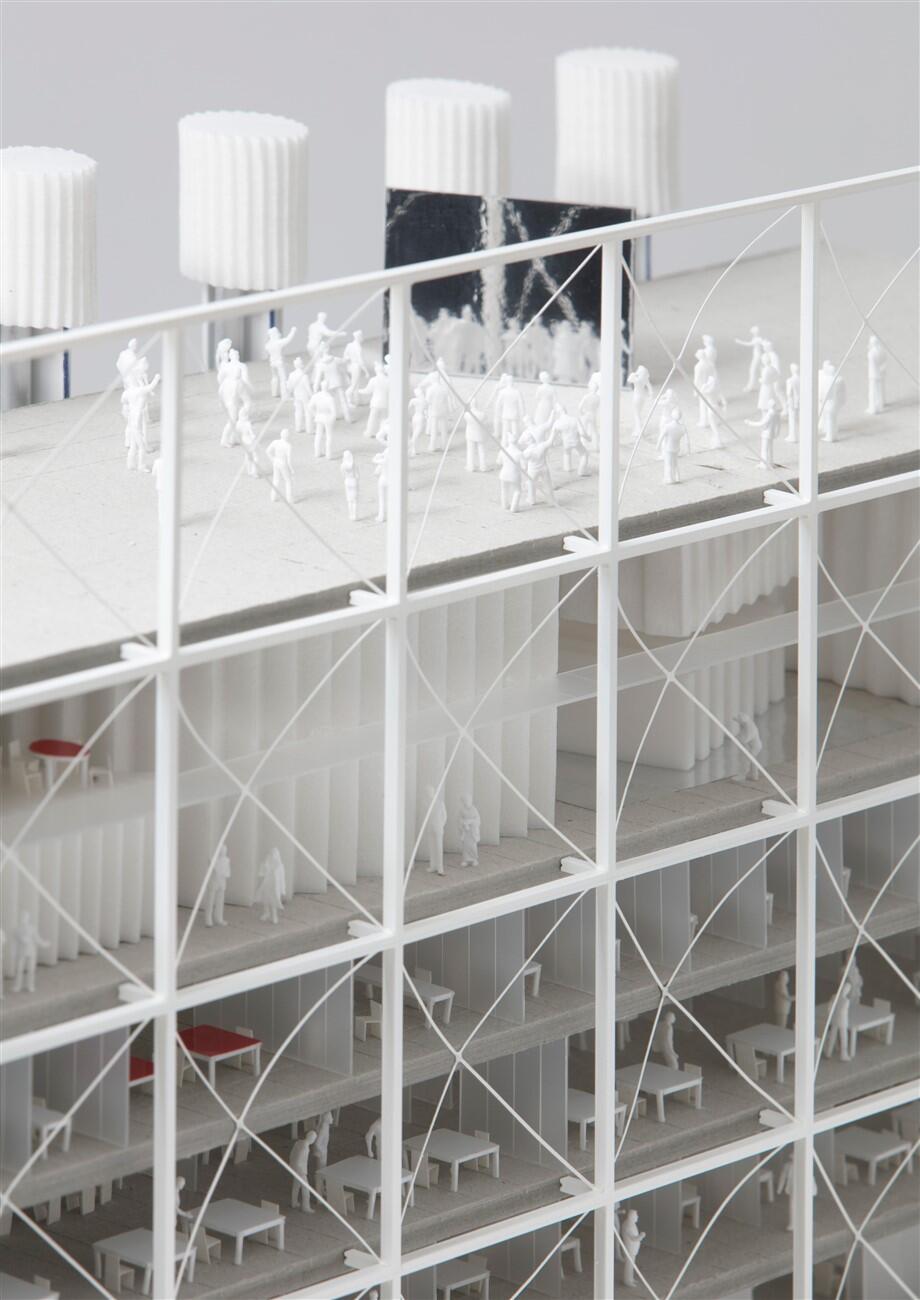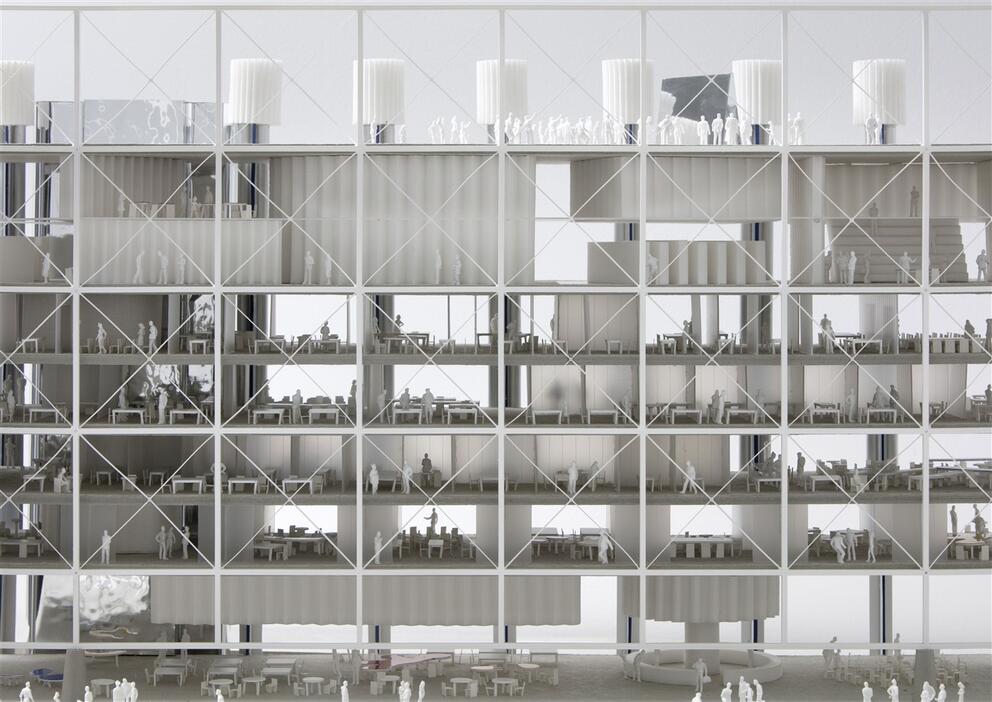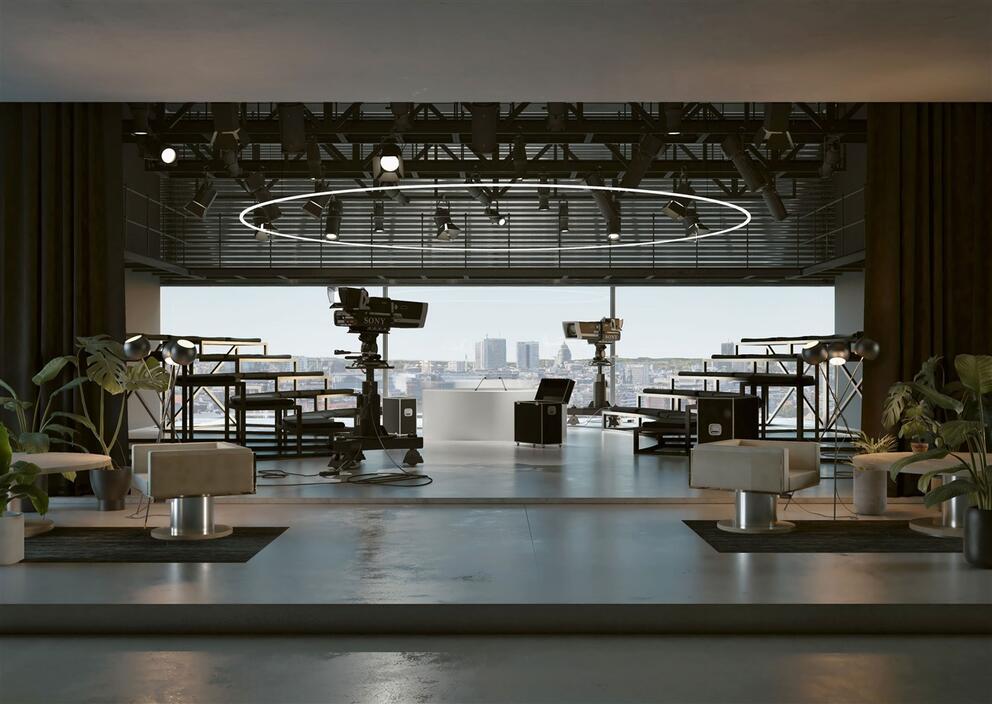Frame, future media house of mediapark.brussels
The design by the consortium Baukunst (Brussels) - Bruther (Paris), winner of the call for project designers organised by the Urban Development Corporation (SAU-MSI) for the construction of ‘Media House’ in mediapark.brussels, was presented today by the architects and the main future occupants, in the presence of Rudi Vervoort, Minister-President of the Brussels-Capital Region, Didier Gosuin, Regional Minister for the Economy and Employment, and Fadila Laanan, Minister-President of the French-speaking Brussels government.
The building, with a floor space of some 9,000 m2, will be constructed at the corner of Boulevard Reyers and Rue Colonel Bourg, on land belonging to the SAU-MSI.
It will house:
- regional television channel BX1;
- screen.brussels;
- the IHECS Academy;
- an innovation platform dedicated to the media/audiovisual sector, and consisting of a co-working space and a business center;
- a catering outlet open to the public on the ground floor;
- shared facilities, including an auditorium that can also be used as a theatre and screening room.
The construction budget is financed by the Brussels-Capital Region and the European Regional Development Fund (ERDF). COCOF has earmarked nearly 3 million euros for the redeployment of BX1 in mediapark.brussels.
The SAU-MSI and the main future occupants have decided to name the building Frame (Brussels media community). Frame refers to: the camera frame in visual media; the frame in web design; the framework provided by the building for the development of a media-oriented ecosystem; the shape and structure of the main façade looking towards Diamant; the ‘window’ onto mediapark.brussels that this building will be. Brussels media community expresses the Brussels character, shared ambition and media specialisation of the dynamic and open ecosystem that form the basis for this collective project.
A showcase for mediapark.brussels
Frame will be one of the first new buildings in mediapark.brussels – a flagship building in this new creative Brussels district dedicated to the media. Its architectural quality will both attract other users and set a standard for future elements of this ambitious urban project.
The architects are now working on the definitive design. The SAU-MSI plans to submit the planning application in July 2018 and to start work in 2021. The building should be finished and ready for its occupants to move in by 2023.
Given the integration of various operators and multiple functions and services within the same building, it will also be a showcase for mediapark.brussels, a kind of ‘miniature mediapark.brussels’. Frame, incidentally, will be the first Belgian public/private/academic collaborative platform dedicated to the media, the audiovisual sector and communication. Frame will thus position itself as the integrator for media, audiovisual and communication professionals in Brussels.
Reconfiguring a district to reinforce an ecosystem
Minister-President Rudi Vervoort: ‘Frame will clearly contribute to the Brussels-Capital Region’s determination to reinforce its media and communication ecosystem. It will do so by taking advantage of RTBF and VRT's decision to vacate much of the 20-hectare site they occupy today and redeploy their activities to two new headquarters, to be constructed over the next few years just behind their current shared building. In September 2017, the Region purchased the public broadcasters’ site. Around the future new headquarters of the VRT (55,000 m²) and the RTBF (38,000 m²), it will organise the gradual development of 2,000 to 2,500 future new homes, premises for new companies in the media and communication sectors (30,000 m²), local facilities (shops, a school, a crèche, etc.), an 8-hectare park and so on. Building will take place on more than 300,000 m² in total, and the connection to neighbouring districts will be restored by removing the fences around the public broadcasters’ current site.’
Regional Minister for the Economy and Employment Didier Gosuin: ‘The Brussels media sector alone employs around 16,000 people and generates 40% of the net added value produced by the sector in Belgium. A very significant part of these activities is concentrated in the Reyers-Meiser district, which numbers some 60 businesses and 5,000 media workers. The importance of fostering this dynamic sector is therefore clear – not just in terms of providing funding for audiovisual productions, but also in terms of supporting all those involved in this economic sector, especially businesses. This is the role of the screen.brussels cluster.’
Fadila Laanan, Minister-President of the French-speaking Brussels government (COCOF): ‘COCOF has decided to grant nearly 3 million euros for the redeployment of the Brussels Region’s French-language TV channel BX1 in mediapark.brussels. This was an unmissable opportunity to position this key actor in the Brussels context within this integrated cluster. The integration of BX1 in this project will enable numerous links to be developed with partners in the sector, but will also encourage synergies and economies of scale in the use of resources and development of new projects. BX1’s values are based on its public service mission of broadcasting informative TV programmes and promoting the cultural development, education and participation of the population. I’m delighted to give it this opportunity to contribute to the ecosystem being created in Frame with these values which are dear to me.’
A Belgian-French team selected from among the 51 applications
Gilles Delforge, Director of the SAU-MSI: ‘I’m delighted by the great interest elicited by the architectural competition for this flagship building of mediapark.brussels. By April 2017, we had received 51 high-quality applications in response to the call for project designers. Some of these multidisciplinary teams were Belgian, others come from various other European countries including France, Germany, Spain, the UK and the Netherlands, and others still were international consortia of firms from these countries. This demonstrates the attention that has been attracted by the development of mediapark.brussels, of which Frame will become a showcase. The SAU-MSI is also delighted by the excellent collaboration with the main future occupants, whose needs it will make every effort to take into account in its role as project manager.’
The following multidisciplinary team has been selected from among the 51 applications received by the SAU-MSI:
- Baukunst sprlu - Architecture - Forest
- Bruther sarl - Architecture - Paris
- Bollinger+Grohmann sarl - Stability engineering - Paris
- Bureau d'études Pierre Berger - Building services engineering and Energy performance coordination - Chaudfontaine
- Georges Brutsaert architects Sprl - Safety and health coordination - Ottignies-Louvain-la-Neuve
- Kalhe acoustics - Acoustics - Ixelles
- Gielen Bjorn landinzicht GCV - Landscaping - Forest
- Le roi nu sprl - Textile design - Forest
Belgian architect Adrien Verschuere, founder of the firm BAUKUNST: ‘My design explores the presence of the image and of information exposing our contemporary society, its future development and the paradigm shifts that these things are causing. Engaged in an inexorable process of dematerialisation, this media environment has a paradoxical need to affirm and manifest its presence. The design is enriched by this paradox of making tangible the presence of content focused on intangibility.
Our proposal supports this exploration using the tools available to a city and its architecture, reflecting both the permanence of the environment created by the design and the versatility with which it will be inhabited. It offers an ambitious living environment and creates synergies within a space intended for a multiple community, open to future needs in both urban planning and architectural terms. These considerations have translated into a strong contribution that affirms the visibility of a developing activity and a site while constituting a flexible exchange platform suitable for use by anyone. In addition to its relative neutrality, the project offers a context for the diversity of its urban setting as well as the range of different activities that it accommodates and will welcome in the future.’
French architects Alexandre Theriot and Stéphanie Bru, founders of the Parisian firm BRUTHER: ‘The Baukunst-Bruther collaboration for Media House in Brussels follows on from major projects such as the new life sciences building on the UNIL-EPFL campus in Lausanne (CH) or the construction of a student residence on the Saclay campus in Palaiseau (FR). With strong common values and obvious complementarity, our Franco-Belgian collaboration is enriched by its international nature; using a two-country approach to designing and building Media House in Brussels automatically reinforces the European character of this building. In an urban environment undergoing rapid revival, the building sets up a subtle dialogue with its site to become an architectural figure that symbolises a creative district. Symbolising a versatile and ever-changing sector, the building ensures its own long-term relevance by offering great flexibility, in particular through the use of enormous, open-plan, modular spaces. We had to imagine a confluence point, a gathering place for ideas, dreams, investors and visitors; to create a place for multiple purposes and interdisciplinary exchanges; to conceptualise Media House as a place of expression, growth and freedom.’
Frame’s Brussels ‘Fab Three’
Marc de Haan, director-general of BX1: ‘Moving into this place, this building, was an obvious step for BX1, which now sees its building as a blank slate on which it can write, rub out and rewrite new approaches to producing media content.’
The director-general of screen.brussels, Noël Magis: ‘One of the challenges of the Frame building is to develop an architecture and facilities that encourage new social interactions between the various actors in the sector. By facilitating the project-based mode of operation as much as possible, it will make it possible to create innovative solutions and content inspired by this new way of working together.’
The managing director of IHECS, Jean-François Raskin: ‘This location is ideal for the IHECS Academy, because the centre for continuing training and research at IHECS is at the forefront of the latest advances in communication and information. Its specific contribution is to offer training centred on the concrete, on the practical, on working realities. And to be responsive to a world of communication that is changing, to technological upheavals that call for greater affirmation of the human factor.’
Frame and mediapark.brussels at MIPIM 2018
This year, mediapark.brussels will be the theme of the annual major event organised at MIPIM by the Brussels-Capital Region, the traditional ‘Breakfast in Brussels’, attended by several hundred real estate professionals. The shared public and private ambitions for mediapark.brussels will be discussed on Thursday 15 March at a session entitled ‘mediapark.brussels: investment opportunities, public projects and private involvement in Brussels’ future new creative district’. More information here.

